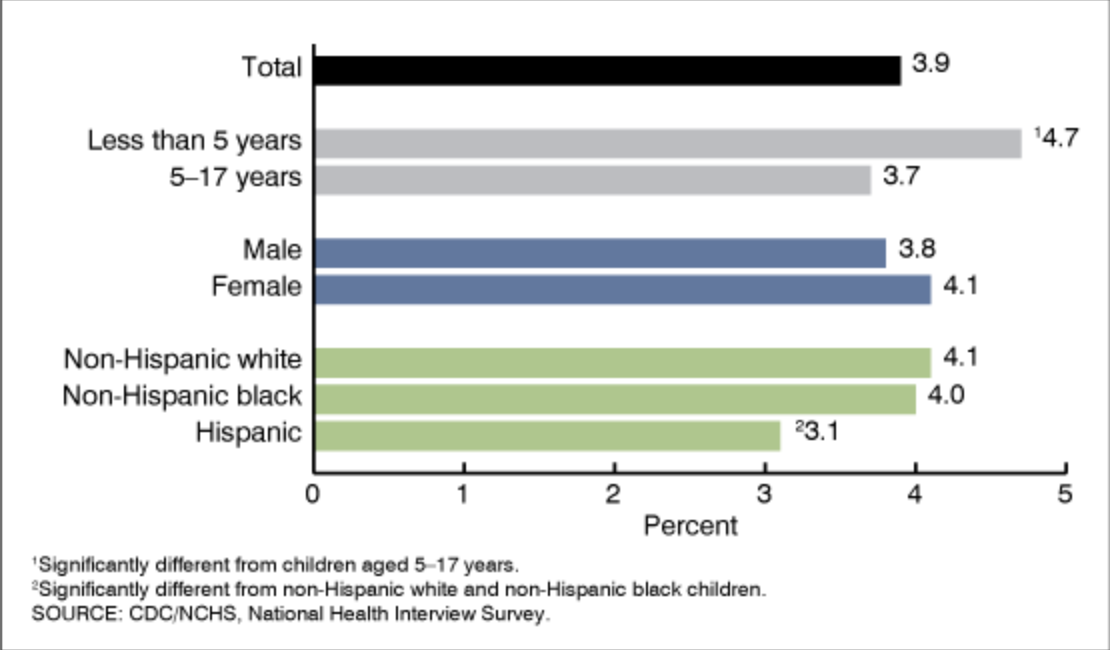Food allergies affect people of all ages, environments, and background. Within the past decade, the prevalence of food allergies has increased in the world population, with over 15 million people living with at least one food allergy in the United States alone26. In particular, the percentage of children afflicted with mild to severe peanut allergies has more than doubled since 199727. Current research suggests limited causality of food allergies based on genetic history, time of food exposure, and pre-natal/ post-natal diet. Definitive causes of food allergies and therapies to prevent them continue to be investigated.

Figure 26 – Percentage of children under age 18 years who had a reported food or digestive allergy in the past 12 months, by age, sex, and race and ethnicity group: United States, 2007. 2
With approximately 60% of fatal anaphylaxis events being brought upon by allergic reactions to peanuts26, and the number of those affected increasing each year, the prospect of finding therapeutic techniques to reduce allergic response to food allergens and inhibit the pathways behind it remain a worthwhile scientific pursuit.
In the past decade, researchers have made headway towards understanding the structure and function of proteins that cause peanut allergy responses. As described previously, therapies targeting the sensitization to Ara h2, IgE production, or interaction of these two molecular structures have been explored. With increasing genetically-modified organism technology, the idea of peanut products that do not contain the Ara h2 protein would be a path worth pursuing. Developing a pharmaceutical to induce peptide cyclization or peptide stapling to inhibit the protein-protein interaction between IgE and Ara h2 may also produce favorable results for treating peanut allergies. Unlike allergic responses to substances that are normally ingested in high quantities (such as certain forms of drugs), peanut allergies should be simpler to treat, since usually the allergen is not present in high doses within the human body.

From a community health standpoint, it is important that the scientific community also pursue research on potential environmental factors behind increasing occurrence of peanut allergies in the world population. Without an understanding of the biochemical and the environmental reasonings behind public health issues, we cannot determine the proper measures to take in order to prevent further occurrences of peanut allergies.
Great summary! 🙂
I think you meant to source a specific paper instead of what looks like free hand note “(peanut allergy overview paper)”.